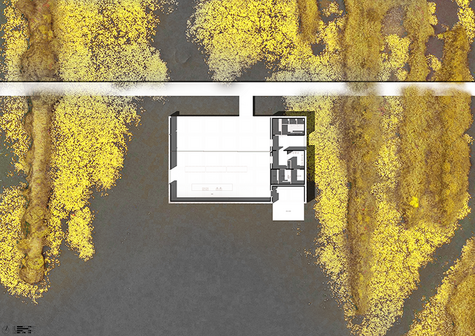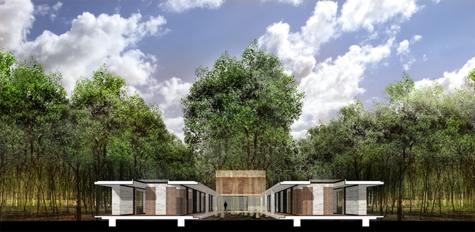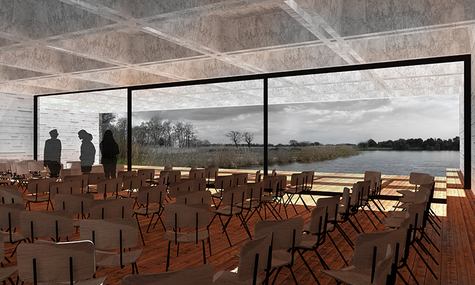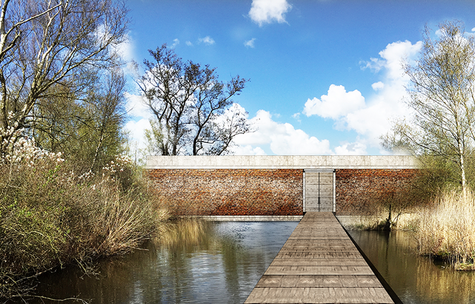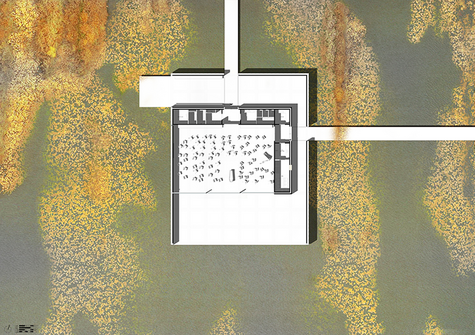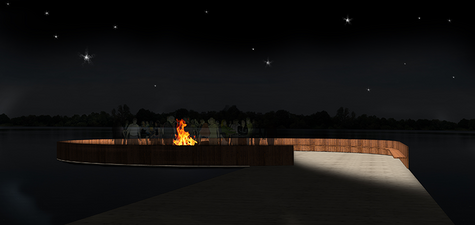Jasper Smits
- Course
- Architecture
- Class
- 2016
Ruimte voor afscheid: afscheid nemen en cremeren
A close acquaintance of my parents died and was cremated. The evening before, I bade her farewell and offered my condolences to her family in a building of the funeral and cremation services company Yarden. I walked into the crematorium. We could leave our jackets in the cloakroom. People said hello here and there. I didn’t see any family members or relatives of the deceased. The sign above the entrance to the auditorium lit up: silence. The undertaker opened the doors to the auditorium. I saw the family sitting down with their backs towards us. The final farewell began with beautiful words and music. After half an hour, we were led past the casket by the undertaker, and the coffee and sandwiches were waiting in the condolence room. Family and close relatives joined us a little later. They were present during the lowering of the casket. The offering of condolences began. I was done after one and half hours and saw another hearse with a family waiting for the following farewell service. The casket of our good acquaintance will have already been burnt.
The above-mentioned cremation aroused anger and aggression in me. It describes the businesslike, chilly and above all slickly-run organisation of the cremation. No contact with the outside world at all. The restricted space and limited opportunity for movement: from reception area to auditorium then condolence room and, as a result of this, the limited time given to experience, reflect on and share emotions in relation to the deceased and her family. The undertaker’s rigid direction of the proceedings made the guests feel hounded. The experiences gained at the three funerals inspired me when formulating ideas about what is needed to provide the cremation ceremony with a sense of space and togetherness, as well as ensuring people can take responsibility, have time and direct proceedings themselves.
How could I answer these demands as an architect?
Both the archetypal crematorium and the farewell ceremony of a cremation are aimed at efficiency and taking care of all one’s needs. As a result of this, the final farewell has become a production lasting an hour and a quarter. The bereaved are kept at arm’s length and are observers instead of participants. The result is a fleeting farewell in which the contribution of the bereaved is minimal. As a result of this, one can only relive the memory through photos. Death, but also the individualisation of society, calls for a more personal farewell in which there is sufficient time, space and resources to arrange the farewell oneself. The traditional village funeral had both spatial and personal qualities that have been lost over the years. The commotion, the transience, the hustle and bustle and the scale of the modern city offers no space for a comparable ceremony. The landscape, which demands nothing and is always in motion, makes the farewell more intense. ‘When the casket was lowered, it started to snow.’ That is why I am making a crematorium in the landscape with a family house and a studio where one has the time and space over the course of a week to bid farewell and hold the farewell ceremony as one sees fit.
Commission members: Donald van Dansik (mentor), Floris Hund, Bruno Doedens. Additional members for the exam: Bart Bulter, Judith Korpershoek.

